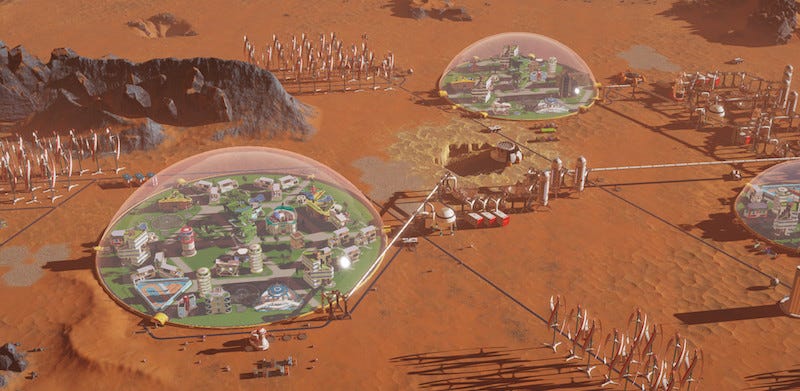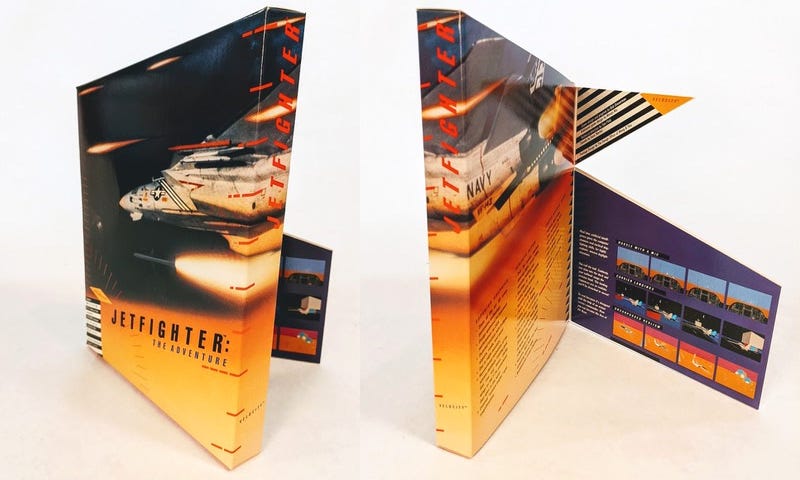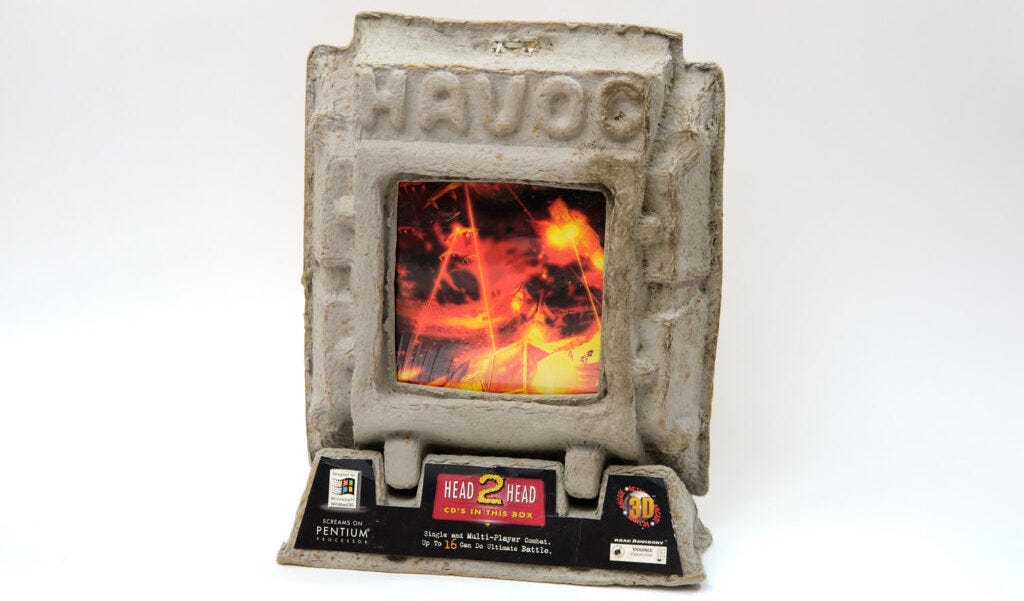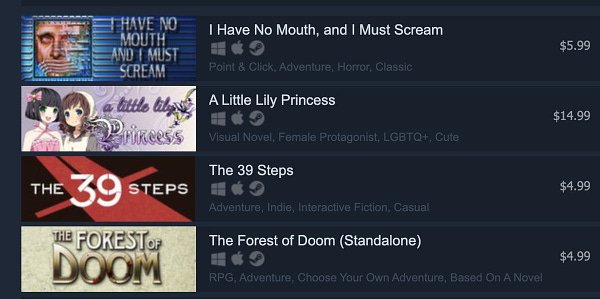Which genre should your next PC game be in?
Publikováno: 3.3.2021
Perhaps an open-ended question.
[The GameDiscoverCo game discovery newsletter is written by ‘how people find your game’ expert & GameDiscoverCo founder Simon Carless, and is a regular look at how people discover and buy video games in the 2020s.]
Welcome back, GameDiscoverCo cosmonauts, to the today’s spacewalk, exploring video game platforms and discovery with words. And pictures, because pictures stimulate the visual cortex.
We start out this newsletter with a look at how Steam’s tag system allows us to do broad trend analysis on games:
The PC game genres that make a difference
You may recall, a year plus ago, that Eastshade developer Danny Weinbaum made an excellent Gamasutra post where he pulled data for every Steam game and - among other things - built a map of median revenue per Steam tag.
This gave a really interesting data-rich view of the (user-picked, developer-modified) Steam tags that were making for, well, more successful games! But he was only ever able to pull that data once, so we didn’t get an ongoing view of it.
Luckily, other Internet users have taken on the task. So we wanted to point out the (generically named, but excellent) Games-Stats. It’s one of many sites scraping & interpreting Steam data, but does more with tags than any other public example out there. (Consider supporting them on Patreon, btw!)
Anyhow, here’s their list of Steam tags ranked by median net revenue - that is, the 50th percentile estimated net revenue of all games with that tag. And it’s constantly updated, too.
Of course, some of the top tags are for things you can’t just decide to make (Games Workshop games, for example - you need a license for those!) But just providing a few basic takeaways from the list:
The first broad genre we can see among the top tags is Colony Sim (pictured above, Surviving Mars), with $44,000 median revenue across 292 games. And in general, in-depth strategy elements figure highly in the top-rank subgenres.
As we go down, wanted to highlight high-median tags like Roguelike Deckbuilder ($38,000 median), 4X ($35,000 median), City Builder ($22,000 median), and Grand Strategy ($19,000 median). These are tags which - if they truly apply to your game - seem to have some of the best median financial results for today’s Steam player.
Technically, the median of the Steam tag median revenues (!) is about $2,600. So anything above that figure is a tag worth paying attention to. But we’ve generally taken $5,000 to be a good base figure across all subgenres (action RPG is $4,300, driving is $4,500, for example). So if you’re seeing a tag that is significantly more than that - it may be an interesting genre to be in on PC.
For cross-platform purposes, hot PC genres do not necessarily map that well at all to hot console game genres. We think most of you would agree that 4X or grand strategy games don’t control easily or sell that well on Switch or Xbox. So if you have cross-platform aspirations in mind, you’ll want to think about that carefully.
Honestly, there’s still some issues around treating this data as gospel. For starters, don’t forget that all games have multiple tags, not just one. And to get to these low median revenue numbers, many broader Steam tags (platformer, etc) get a lot of semi-professional games in them which cost $5 or less.
So if you could restrict the data set that games that cost $15 or more, do you see a different shaped set of games by median revenue? When we’re done with building out robust pre-release Steam analysis with our GameDiscoverCo Plus data back end, we’re hoping to look into post-release analysis like this. More when we get there!
‘80s game discovery by… retail box design?
Let’s step back a second to the 1980s and 1990s. You were a game publisher, and you were distributing your game to stores via floppy disc or CD-ROM. How on earth did you differentiate yourself on the shelves from other games?
Well, innovative, borderline outlandish physical box design was one way you could do that, with games such as Broderbund’s Jetfighter: The Adventure in 1988 (see above image.) And Phil Salvador has written an amazing essay about Hock Wah Yeo, the graphic designer responsible for a host of these spectacular boxes.
Many of these boxes were triumphs of design, designed to stand out on shelves and draw prospective players to them. It’s a physical ‘hook’ of the strongest type, almost like a supercharged version of today’s Steam capsule image. From Phil’s piece:
“Yeo’s clients all used similar language to describe the appeal of unconventional packaging: it was tactile, it was physical, three-dimensional, tangible, something you’d want to touch... But they were also quick to remind me that the goal was always to get shoppers to pick the game up, then read what was on the back and look at the screenshots. The box draws them in, but it’s the quality of the game that would (or wouldn’t!) close the sale.”
Even Prince Of Persia creator Jordan Mechner just weighed in on the trend, noting: “Prince of Persia was a flop on its first PC release in 1990; many retailers sent it straight to the bargain bins. PC sales only took off two years later when Broderbund replaced the original "red box" with the big, oddly shaped one below. Packaging matters :)”
One of my favorite box examples from the article is Reality Bytes’ Havoc from 1995 - yes, it’s using egg carton material! What a beautiful example of industrial design:
Eventually, non-standard boxes became a space issue as aisles filled out. And here’s where it all ended: “The final nail in the coffin for unusual packaging was hammered into place on July 20, 2000 at a conference at Walt Disney World’s towering, modernist Contemporary Resort, when… the Interactive Digital Software Association and the recently formed Interactive Entertainment Merchants Association finally agreed to a joint proposal to standardize the size of computer game boxes.”
Phil was kind enough to share with me some of his research material, including scanned magazine material on the Internet Archive such as ‘Distributing The Wealth: Sliding CD-ROM Into The Consumer Channel’, if you’d like to poke around in this fascinating discovery niche any further.
And with physical ‘boutique’ releases of games back in vogue, and most of it fulfilled without needing to take up shelf space, who knows how outlandish 2010s physical boxes could get? Fingers crossed…
The game discovery news round-up..
We’re almost done with this newsletter, and thereby the free newsletters for this week. So let’s finish things out with a bang:
The social network we think more game publishers/devs should be paying attention to is TikTok, and Thomas Reisenegger is helping us all by putting out a new TikTok guide for indie game creators, hurray! He says: “We believe TikTok will soon be a staple for indie promo next to Twitter, Reddit and Imgur when it comes to social media platforms.” Agree, please read his words.
Steam is still pushing Remote Play, their neat way to cloud-stream games and co-op sessions - even with those who don’t own the game - from multiple devices. Couple of extra and semi-related things here: there’s a Remote Play Together sale/event later in March you can sign up for as a dev. And there’s now a Linux version of Steam Link, for those interested in trying Remote Play there - there’s also clients for iOS, Android, and even Raspberry Pi.
The Wholesome Direct streaming showcase - which favors cuddly, pastoral, or otherwise relaxing titles - is back again in 2021. And the Wholesome Games team behind it just opened up submissions if you’d like your game to be featured. The organization’s YouTube channel features a lot of the games that they concentrate on, as well as footage of last year’s pre-E3 timed showcase.
Most of the game-specific analysis we do at GameDiscoverCo stays in the Friday newsletter (which you can unlock as a Plus subscriber!) But just cutting in to say - woof, People Can Fly/Square Enix’s co-op looter shooter Outriders, pictured, is coming in hot! It’s regularly in the top 5 global Steam top-sellers via its pre-order, despite not being out until April 1st, and the free demo had as many as 55,000 simultaneous players. Expecting a big splash for this on launch.
Microlinks: one of the first indie streaming showcases for the year, the Japan dev-centric NGPX, is taking place on March 4th; looks like Sony is stopping renting/selling film and TV shows on PlayStation Store; you probably spotted Epic buying Fall Guys’ parent company, but wonder what’s going to happen under Epic with Irregular Corp - the publisher that Tonic Games Group also owns? (More of a question than a statement.)
Finally, when looking at Steam game tags for the lead story, I was most amused by the below one:
(Not because it’s odd in itself, just more about the crazy variety of games in it. And how you sometimes forget they’re even based on a book. Plus, somebody on Twitter found Mark Twain’s Tom Sawyer: Survival Game, which is _certainly_ an interesting adaptation of a novel.)
[We’re GameDiscoverCo, a new agency based around one simple issue: how do players find, buy and enjoy your premium PC or console game? You can subscribe to GameDiscoverCo Plus to get access to exclusive newsletters, interactive daily rankings of every unreleased Steam game, and lots more besides.]





